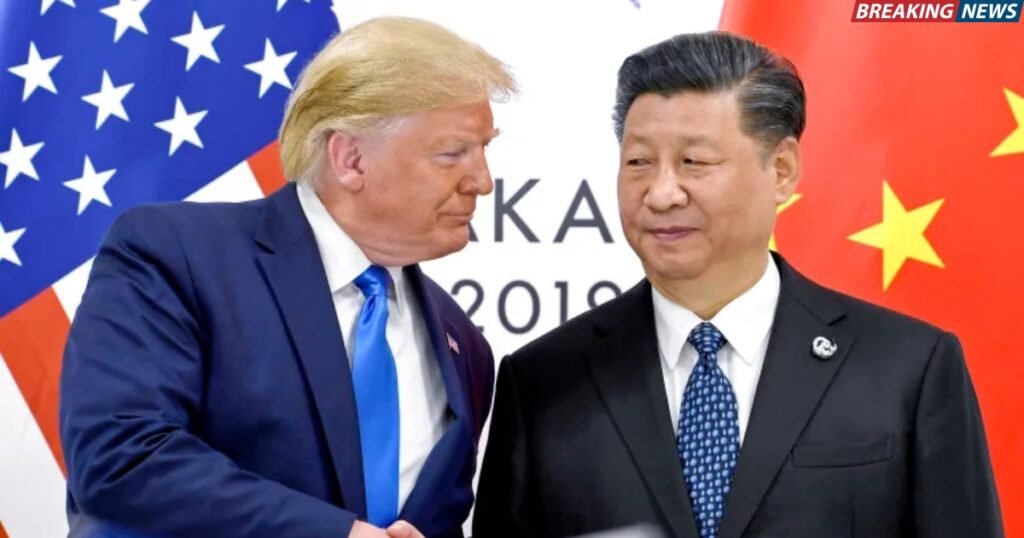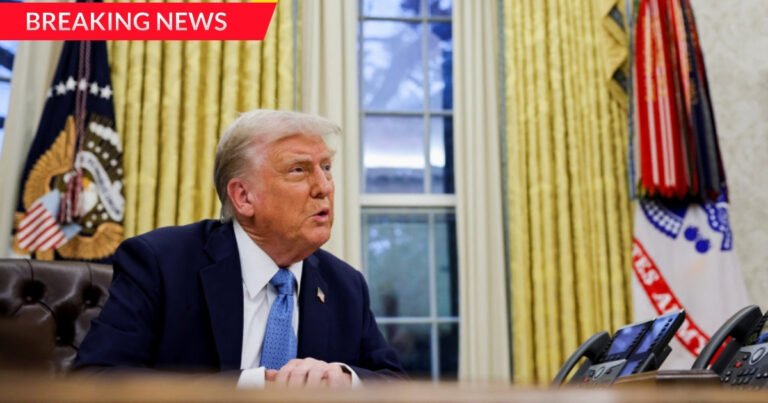
The trade tensions between the world’s two economic giants — the United States and China — are flaring up again. And this time, neither side seems ready to blink.
Hours after President Donald Trump threatened to nearly double tariffs on Chinese goods, Beijing fired back with a message loud and clear: We’re not backing down. The Chinese government says it’s prepared to “fight to the end.”
If Trump goes through with his plan, tariffs on Chinese imports could skyrocket to an eye-watering 104% — a move that would affect everything from smartphones and video game consoles to screws and boilers. It’s not just economic policy anymore — it’s economic warfare.
And with Trump eyeing Wednesday to make the next move, the world is watching: who flinches first?
“It would be a mistake to think China will just roll over,” says Alfredo Montufar-Helu, senior advisor to the China Center at The Conference Board. “Backing down now would make them look weak — and embolden the U.S. to demand more.”
Markets Wobble, Uncertainty Grows
Markets have taken a beating. Asian stocks dropped sharply earlier in the week, and while there was a minor recovery on Tuesday, volatility remains high. China isn’t just responding with tit-for-tat tariffs — it’s allowing the yuan to slide, making exports cheaper, and buying up local stocks to steady the financial ship.
Trump, meanwhile, has threatened to hike tariffs by another 50% if Beijing doesn’t step back — a bold move that could raise total duties on Chinese imports to punishing levels. Neighboring economies like Vietnam and Cambodia are also feeling the squeeze, with tariffs potentially reaching 49%.
It’s a Game of Endurance, Not Gains
Experts warn we’re past the point of negotiating for wins — this is now a test of who can take more pain.
“We’re no longer talking about gains,” says Mary Lovely of the Peterson Institute. “This is about who can endure more without giving in.”
And while China’s economy is already under pressure — hit by a property crisis, rising unemployment, and sluggish consumer spending — experts say it’s unlikely President Xi will fold easily.
“The tariffs only make their current problems worse,” adds Andrew Collier of Harvard’s Kennedy School. “But China still has options.”
Those options include more currency moves, stronger support for domestic firms, and regulatory heat on U.S. businesses operating in China.
The U.S. Has Skin in the Game Too
This isn’t a one-sided blow. America imported $438 billion worth of Chinese goods in 2024, while exporting just $143 billion — a trade deficit of nearly $300 billion. Replacing that supply chain overnight? Not likely.
“The U.S. and China are deeply intertwined — from goods to digital trade,” says Deborah Elms from the Hinrich Foundation. “You can only tax so much for so long.”
As China reroutes exports to Southeast Asia and beyond, other markets will feel the ripple effects too. Smaller economies juggling their own trade issues now have to find room for displaced Chinese goods.
So, Where Does This End?
That’s the trillion-dollar question. Trump hasn’t spoken to President Xi since returning to office, although Beijing has signaled it’s open to dialogue. Some insiders hint that backchannel talks could begin. Others aren’t so sure.
“It’s unclear what the endgame is,” says Roland Rajah of the Lowy Institute. “Unlike Trump’s first term, this doesn’t feel like a negotiation tactic — it feels like a full-blown escalation.”
And that’s what has experts most worried. The pace. The scale. The uncertainty.
“I’m concerned,” says Elms. “It feels like the U.S. is overplaying its hand, assuming other countries will bend. But no one knows how this ends.”
Until then, we all brace for impact.



